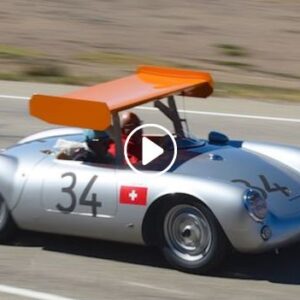
Introduced as a separate make in 1955, the Chrysler Imperial bore the styling that Virgil Exner, Chrysler’s Vice President of Styling at the time, came up with for the entire line. This design remained all up to 1963, memorable for its long wheelbase, wide split egg-crate grille, and taillights mounted above the massive rear quarters.
In 1955, the Chrysler Imperial came in coupe and sedan body styles, although the limousine was also available limitedly. It featured a newly designed 331 cubic-inch V8 engine producing 250 brake horsepower paired with an automatic transmission. This power output rose to 280 brake horsepower as soon as the following year, followed by the introduction of smaller tailfins.
The 1957 Chrysler Imperial got even more upgrades, starting with a new platform, a wider body, and a sleeker front end. Another big update for this second generation was the suspension, which made the car much more stable than its competitors and provided smooth and enjoyable handling.
The Exner’s recognizable “Forward Look” design was maybe most evident in this production year because of the massive egg-crate grille, quad headlights, and tall tailfins. It boosted the sales back in the day over all three trims available: the Imperial Custom, the Imperial Crown, and the Imperial LeBaron.
Throughout 1958, little changed in the styling of the Imperial, but the sales dropped. The 1959 Chrysler Imperial got a couple of updates on the outside and new interior options, such as swivel-out front seats, but nothing drastic. Until 1963, the Chrysler Imperial got a characteristic space-age dashboard with electroluminescent lighting, a tall steering wheel with lots of legroom, and other interesting features that slightly improved the sales.







